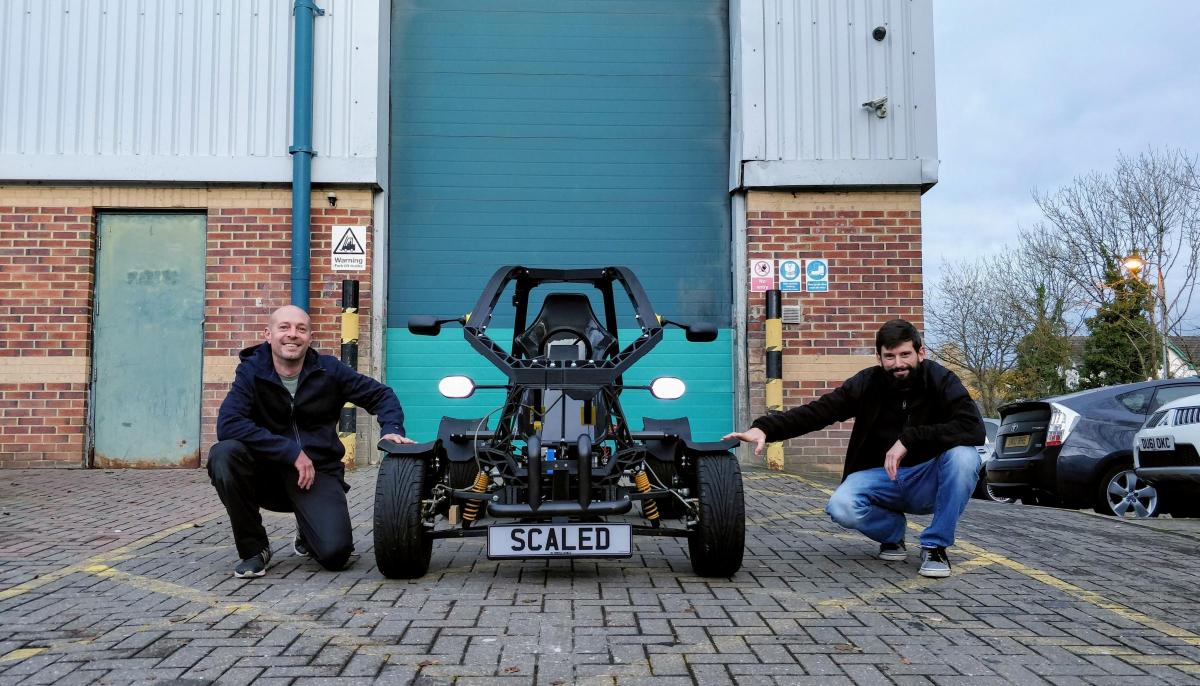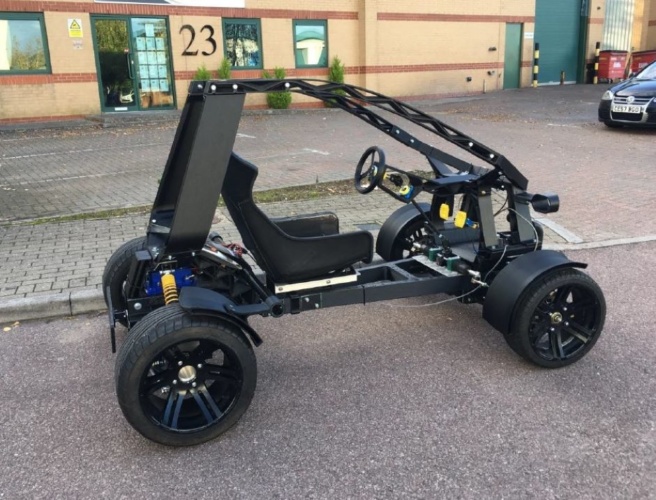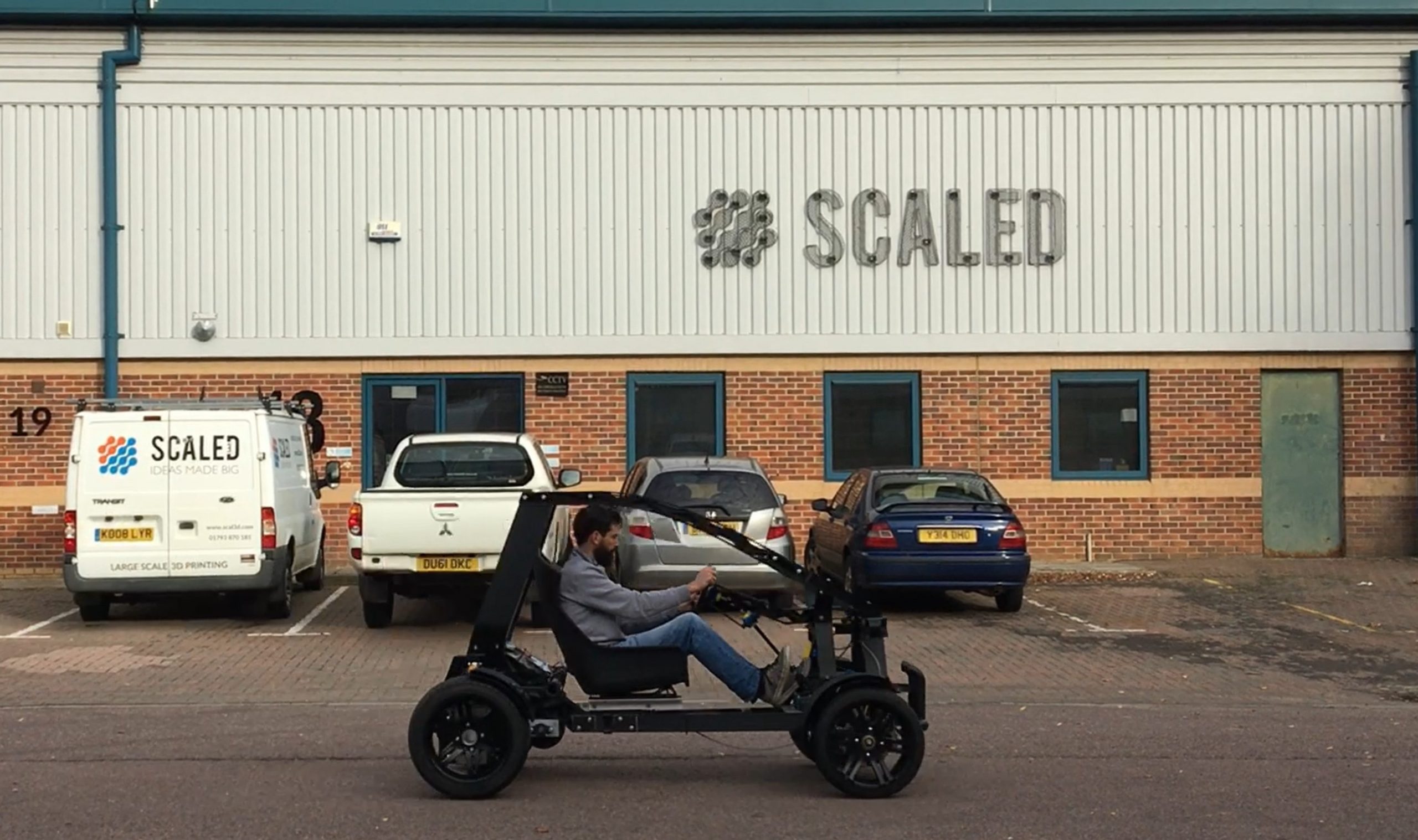A team of engineers from UK-based technology startup Scaled have developed the country’s first 3D printed electric vehicle.
Dubbed the Chameleon, the buggy-esque single seater has a 3D printed frame, and was developed over the course of several months by co-founders David Speight and Bob Bradley at the Rushy Platt Industrial Estate in Swindon. The team have made the vehicle available for driving demonstrations while it goes through extensive testing to ensure safety and functionality before a commercial launch.
Bradley states: “We hope to offer a viable alternative for those situations where a functional, sustainable electrical vehicle is attractive. Using this technology, it can also be adapted to a wide variety of different needs.”

The eco-friendly Chameleon
In its current state, the prototype is capable of a top speed of 45 mph, and weighs 150kg in total. It is powered by a Lynch electric motor, and also features a number of non-3D printed parts produced by students from the University of Birmingham’s Racing Team. The project was ultimately intended to showcase the capabilities of the company’s Chameleon Platform – a comprehensive manufacturing cell comprising a large-scale FDM 3D printer and complementary robotics systems.
Scaled also partnered with engineering software developer Rafinex for the project, and utilized the company’s stochastic topology optimization software to fine-tune the final geometry of the frame. Rafinex’s software is designed to test a set of random tensile and compressive loading conditions to optimize a structural design, ensuring the final product does not fail regardless of any unexpected environmental conditions.

As you might be able to tell, environmental sustainability is the name of the game here, so the team has opted for recycled PA6 manufactured by materials specialist LEHVOSS Group as the primary material of the frame. Its strength and durability reportedly make it a great contender for an automotive frame, all while helping the circular economy. The idea spawned from the notion that waste material could and should be used to manufacture ecological vehicle components, promoting recycling while also saving on weight.
Bradley explains: “30% of the vehicle included recycled PA6. In the future it will definitely be possible to up the amount of circular plastics in use for this type of thing – something we are very excited about.”

Perfect for short-distance transport
The Chameleon was designed for a fairly specific purpose, and that’s short-distance travel. It’s aimed at a select group of potential customers that need to rapidly cover short distances, including site-patrolling security firms, airport staff, and train station staff. The car could also be great as a company vehicle for nearby employees to get to and from work (although this is probably best limited to small towns).
In recent years, 3D printing has seen increasing use in the development of eco-friendly transport devices. Just last month, industrial design graduate Kristen Tapping unveiled her use of 3D printing to produce a bicycle wheel capable of purifying air of pollutants. The novel invention is called Rolloe Roll Off Emissions, and utilizes a series of sponges and filters to trap harmful emissions before releasing clean air back into the environment.
Elsewhere, a team of ten ETH Zurich students recently used Sintratec 3D printing technology to design and manufacture a fully functional prototype of an electric motorcycle. The ETHEC city project, which took just one year from concept to assembly, was reportedly motivated by the issue of environmental sustainability.
Subscribe to the 3D Printing Industry newsletter for the latest news in additive manufacturing. You can also stay connected by following us on Twitter and liking us on Facebook.
Looking for a career in additive manufacturing? Visit 3D Printing Jobs for a selection of roles in the industry.
Featured image shows the Chameleon in front of a Scaled facility. Photo via Scaled.
